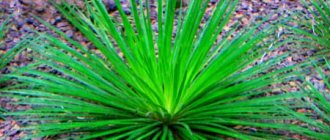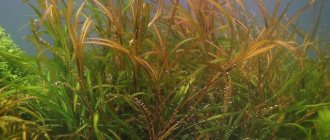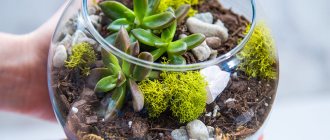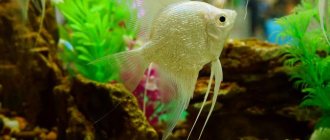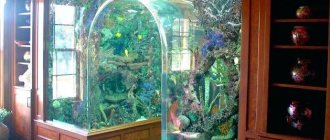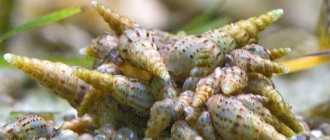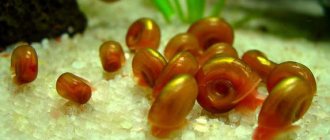Amazon Basin
The Amazon basin is the largest lowland on our planet. It covers an area of more than six million square kilometers. Almost the entire area is covered with tropical rainforests (Amazon jungle). This tropical forest is the largest in the world. The center of the region is the Amazon itself - the deepest river on earth. It's hard to imagine, but its tributaries collect water from nine countries: Colombia, Brazil, Peru, Ecuador, Venezuela, Guyana, Bolivia, French Guyana and Suriname.
Territorial disputes
The Matses have now prepared maps of the four main rivers (Chobayacu, Galvez, Lobayacu and Yaquerana) in their territories in Peru. Almost immediately after the elders began drawing up maps, it became clear that the Matses territories were much wider than the 500 thousand hectares that were legally established. This, in turn, again caused protests within the indigenous population against the introduction of national park territories in Peru.
Christopher Herndon believes maps can be a powerful tool in land disputes.
"It's one thing to say, 'This is our territory.' But it’s another matter if this data is objective and can be provided during a dispute over the distribution of oil production points. The maps showed the full extent of the tribal territories and showed the Matses' ethical and moral ownership of these lands,” he says.
Flora and fauna of the Amazon
The region is incredibly important due to the fact that it is a unique ecosystem. The flora and fauna of the Amazon are unique. It has so much variety. And many representatives of the local fauna and flora are endemic and are found only in this area.
It is worth noting that the Amazon has the greatest diversity of plants. Oddly enough, the region has been little studied to this day, and therefore many animals and plants of the Amazon are still unknown to science. Some researchers believe that the actual number of plant species in this region is three times greater than currently known. Science knows about only 750 species of trees, 400 species of birds, 125 species of mammals and countless invertebrates and insects. The river is home to more than two thousand fish and many reptiles.
Houseplant care
Temperature
The comfortable temperature for the plant in summer is from 21 to 27 degrees, and in winter it should not be lower than 18 degrees.
Lighting
The flower is photophilous, but the plant should not be exposed to direct sunlight , as it can burn the leaves. It is best to install the flower in a bright room with diffused light.
In winter, the plant requires additional lighting. A signal that a flower is lacking light is the color of the leaves. They begin to turn pale and lose their bright color.
Watering
The plant requires moderate watering, and the earthen clod should not be allowed to dry out. If it suddenly becomes noticeable that the leaf blade is drooping, this indicates a lack of water. The plant should be watered with soft, settled water. In summer, watering is required once every two days, and in winter, twice a week is enough.
The plant needs moist air, so the flower feels best in the bathroom and kitchen . In order to create the most comfortable conditions for the plant in a room with dry air, the flower pot can be placed on a tray with expanded clay. In this way, evaporation can be achieved.
It is necessary to wipe the leaves with a damp sponge as often as possible and spray water over the plant.
Top dressing
The plant needs feeding with specialized fertilizers based on potassium and nitrogen. They should be fertilized once every three to four weeks. In winter, half as much feeding is required.
Trimming
Yellowed leaves should only be trimmed when they are completely dry . After pruning, be sure to wash your hands well, as the sap of the plant contains toxic substances. Trimming is done with a sharp knife.
Transfer
It is best to replant the plant at the beginning of the growing season, in the spring. Young plants need to be replanted annually, while adults should be replanted once every two to three years. Adult specimens do not grow intensively, so it will be enough to simply change the pot and add fresh soil once every three years. The size of the pot each time should be larger than the previous one.
Care during the flowering period
This plant blooms extremely rarely. This can only happen in an adult specimen that has reached six to seven years of age. And only if ideal living conditions were created. But this almost never happens with Amazonian alocasia under indoor conditions.
What to do if buds do not form?
The flower of a plant is not considered decorative; it only takes away the strength of the plant, so it is not needed at all. The decorative effect of the plant is in its leaves. Therefore, it is preferable to even remove the inflorescence so as not to stress the plant .
Flora of the Amazon
Until 2011, the wild forests of the Amazon were subject to ruthless deforestation. And the reason for this was not only wood. People have adapted to clearing freed lands for agricultural activities. However, it is worth remembering that the river basin contains the most diverse vegetation on the entire planet. Amazonian forests play a very important role on the globe. They are a huge source of oxygen. In addition, forests maintain the required level of groundwater, preventing the destruction of soil covers. The Amazon rainforest is home to over 4,000 species of trees—a quarter of all known tree species in the world.
The forests contain palm trees, myrtle, laurel, begonias, and mangroves. And fruits include pineapples, bananas, guavas, mangoes, oranges, and fig trees. The Amazon rainforest can be considered the world's genetic pool. Even in small areas the species diversity is striking. For example, in ten square kilometers of forest you can find up to 1,500 varieties of flowers and 750 species of trees. With all this, as we mentioned earlier, not all tropical riches have been studied and described by scientists. One can only guess what other plants grow in the depths of the Amazon.
Prevention of various problems
In order to avoid problems with the flower, you need to observe the necessary conditions for its development. The plant should be protected from drafts, direct sunlight, excessive watering, and also from drying out.
Alocasia Amazonis is a beautiful plant that requires special conditions for normal development. If you create all the necessary conditions, there will be no problems with the flower. However, it is worth noting that people prone to allergic reactions need to be careful with this plant, as it is poisonous.
Valuable representatives of the plant world
Many representatives of the plant world are of great value. For example, in the forests of the Amazon, giant nuts grow, or rather, bertholia nut trees. They are famous for their amazing taste. Each shell, weighing up to twenty kilograms, contains about twenty nuts. Such fruits can only be collected in completely calm weather, since nuts accidentally blown off by the wind can cause significant harm to the picker.
No less interesting is the milk tree, which produces a sweet drink reminiscent of milk. But cocoa is obtained from the fruits of the chocolate tree. The Amazon forests contain a huge number of trees that can take a long time to list. Among them are rubber wood and balsa. The latter is famous for its lightest wood. Indians float down the river on rafts made from such trees. Sometimes their size is so large that an entire village can fit on such a raft.
But of course, most of everything in the Amazon is palm trees. In total there are more than one hundred species. An interesting fact is that they are all very valuable to humans. They produce fiber, wood, nuts, juice and much more. And only the rattan palm is disliked by many, and the Indians generally call it “the devil’s rope.” The fact is that this plant is the longest tree on Earth. It looks more like a vine and sometimes reaches 300 meters in length. The thin trunk of the palm tree is studded with incredibly sharp thorns. The rattan palm creates impenetrable thickets, entwining the trunks and branches of nearby bushes and trees.
Victoria Region
The nature and animals of the Amazon are sometimes so amazing that they boggle the imagination. The most famous plant of these places can be considered a water lily with the beautiful name Victoria regia. This is a giant plant, the leaves of which reach several meters in diameter and can support up to 50 kilograms of weight.
The largest water lily in the world blooms from March to July. Its flowers exude the most delicate apricot aroma, each of them reaches forty centimeters in diameter. You can see this miracle of nature only at night, since the flower begins to bloom only in the evening. On the first day of flowering, the petals are white, the next day it becomes light pink, and then even dark crimson and even purple.
Plants of the Amazon: "Flora of the Mighty River"
The Amazon is one of the natural wonders of the world (in 2011 it was recognized as “One of the 7 Wonders of the World”), stretching from the mountain heights of the Andes to the Atlantic coast. It carries a huge amount of water, being the longest and deepest river on our planet. The area of the Amazon basin is comparable to the size of Australia!
At its confluence with the Atlantic Ocean, the river forms the largest delta in the world, equal to almost 100 thousand km² in area.
Having its mouth in the foothills of the Andes, the Amazon, into which more than 200 tributaries flow, gives the Atlantic Ocean a fifth of the world's fresh water, desalinizing the ocean 200 km from the coast.
Its surprising feature is its frequent spills. The water in the river often rises by 10-12 m, flooding vast surrounding areas. During the flood season, a branched system of channels, countless lakes, ponds, creeks and swamps is formed in the Amazon forests. Therefore, the rich flora of the Amazon includes many species of aquatic inhabitants and plants that have adapted to periodically repeated flooding. During floods, you can see an amazing picture here: islands majestically floating along the river with trees entwined with vines and epiphytic orchids, on which the inhabitants of this part of the forest are crowded, who did not have time to escape from the flood, which washed away and tore off a piece of the bank. Streams of water flowing from the slopes of the Andes and from the Brazilian Highlands carry living creatures and plant seeds throughout the Amazon. Thanks to this, the “dispersal” of representatives of flora and fauna occurs.
The most famous among the aquatic plants of the Amazon River Valley is Victoria Regia, the most beautiful and largest water lily on Earth. Travelers who first explored the local jungle enthusiastically described this amazing plant, to which poems were dedicated. This is not surprising, because the colossal leaves of Victoria can reach up to 3 m in diameter, they can easily withstand the weight of a person up to 50 kg. In addition, huge, delightful flowers exude the most delicate apricot aroma, blooming only at night, and plunging into water in the morning. Interestingly, the color of the petals of a giant water lily constantly changes, depending on its “age”. On the first day of flowering, the petals are white, on the second day they are pink, then gradually become scarlet. Towards the end they acquire a purple tint.
In nature, there are several varieties of water lily, the most common of which are Victoria Amazonian and Victoria Royal (Regia). The flowering of Regia in botanical gardens is a rare event and so significant that all local newspapers report about it. People come in droves to admire the beautiful flower, which remains open for 3 days, changing color from snow-white to pink, finally the lily acquires a purple-violet color and fades.
Victoria Regia
The smooth surface of the waters of small bays and the many tributaries of the Amazon are often covered with a lush carpet of greenery, strewn with a mass of lilac flowers of eichornia - “water hyacinth”. This lovely-looking plant also has another name - “water plague”, the reason for the appearance of such an ominous name is quite simple. Several decades ago, Eichornia was brought to Florida, and a few years later, navigation became impossible on most of the rivers of the peninsula: the long lashes of the aquatic plant, wound around the propellers of steamships and motor boats, interfered with the movement of even small vessels.
Further, the “water plague,” like the terrible namesake that rampaged through the Middle Ages, rapidly began to spread through the waterways of the North American continent, causing terrible losses to shipping. When floating islands of eichornia appeared in Europe, real panic began there. Fortunately, the harsh European winters made it impossible for the “occupier” to continue his victorious march. The United States spent a lot of effort and more than one million dollars to cope with the terrible “epidemic”.
"Water Plague" - Eichornia
It should immediately be noted that the tropical forests of the Amazon exist for a much longer period than the forests of temperate climatic regions. This is explained by the fact that they were not affected by the cold of the Ice Ages and did not experience periods of prolonged drought. Thanks to this, the local flora developed freely and adapted to the specifics of local natural conditions.
The continent of South America separated from other continents more than 100 million years ago, almost all this time being separate from the North American continent. This is a long enough period for the emergence of unique forms of flora and fauna. The flora of the Amazon basin is striking in its rich diversity; the dense thickets of tropical rainforests covering the river basin are home to more than a million plant species.
The local tropical forests, the largest in area in the world (they are rightly called the “lungs” of the Earth), occupy more than 5.5 million km², which is more than half of all tropical forests on the globe. The Amazon jungle has the greatest diversity of flora in the world. More than 6 thousand varieties of flora grow on 1 km² of the Amazon rainforest. The rainforest is characterized by great structural diversity, with plant levels arranged in layers, from the forest soil level to the forest "canopy" zone (over 30 m in height).
Most of the trees growing in the Amazonian jungle are tropical palms (about 800 species), among which there are all kinds of tropical trees: melon tree, cocoa tree, various types of ferns, a huge variety of vines. Forest plants living at ground level are mainly young trees, woody shrubs and grasses.
Perhaps the most famous tree of all that grows in the river basin is the rubber tree (lat. Hevea brasiliensis), called “seringuera” in Brazil. It was because of the rubber tree that the active exploitation of the natural reserves of the Amazon began 100 years ago. The Brazil nut (lat. Bertholletia excelsa) is also found here, which can reach a height of 30 m. One mature tree can produce more than 450 kg of nuts per year.
The Inga tree (lat. Inga edulis) belongs to the mimosa family and grows up to 36 m in height. This tree has colorful, variegated bark, large leaves and white, hair-like flowers, but its most distinctive feature is its seed pods, which sometimes reach more than half a meter in length. These pods contain large seeds and white, sweet pulp. Some Indian tribes use Inga seeds to treat dysentery and some to clean teeth.
The vine (Latin Leguminosae casalpinioideae) known as "escada-de-jabuti" is a rather unusual vine that, climbing tree trunks, blooms at the level of the forest canopy. Lianas are often older than the trees they entwine.
There are a large number of different pointed palms in the rainforest. Moreover, the main trunk of the palm tree begins approximately 2-3 m from the soil level, and its roots, rising above the ground, are equipped with thorns for protection from animals. In this way, palm trees have adapted to the peculiarities of the local climate. During forest flooding, the trunk is located above the water level, and during the dry period, the roots can absorb nitrogen from the soil and from the atmosphere.
This type of tree also includes the unique “walking” palm (lat. Socratea exercisia), the wood of which is often used to make parquet boards. Another palm (lat. Socratea exorrhiza), also common in the Amazon basin, grows up to 15 m tall. This palm is distinguished by a thin trunk, thorny roots that grow in a tepee shape above the ground level, and long thin leaves that are used by some local Indian tribes to treat hepatitis.
Unfortunately, the current rate of deforestation of the lush Amazon forests is alarming. Scientists claim that as a result of thoughtless, uncontrolled human actions, carbon dioxide is already entering the Earth’s atmosphere by 25% more. This cannot but contribute to the negative processes contributing to climate change on the planet. The unique flora of the Amazon is gradually disappearing for other reasons. As a result of climate warming, powerful forest fires are increasingly destroying large forest areas.
The vast Amazon basin to this day remains a poorly studied area of the South African continent, inhabited by equally insufficiently studied indigenous Indian tribes. A huge natural area of swamps, savannahs and selva (tropical forest), in which a fantastically diverse world of flora and fauna has been preserved - one of the few places on the planet that has not been spoiled by the destructive influence of modern civilization.
Just think, the amazing flora of the Amazon has been studied only 30% to date! And a quarter of all medicinal plant components that are used in the world's pharmaceuticals are extracted from forests growing in the Amazon River basin.
[1]
Amazon wildlife
The Amazon rainforest is full of rare animals, some of which are on the verge of extinction: the baker, sloth, spider monkey, armadillo, freshwater dolphin, boa, crocodile. The fauna of the Amazon is so diverse that it is difficult to count all its representatives.
Near the river bank you can find a stunning creature that can weigh up to 200 kilograms. This is a tapir. It usually moves along paths along the river, looking for algae, twigs, leaves and fruits for food.
Amazon animals such as capybaras (the largest rodents in the world) live near the ponds. Their weight reaches 50 kilograms. Externally, the animals resemble a guinea pig. And along the banks of the river, the anaconda, which is rightly considered an incredibly dangerous creature, awaits its victims.
The most dangerous animals of the Amazon
Tropical forests are not only incredibly interesting places, but also unsafe. Not all of their inhabitants are distinguished by a meek disposition. The most dangerous animals of the Amazon terrify any person. This is not surprising, because meeting one of them can lead to the most dire consequences. It’s not for nothing that some jungle inhabitants have long become heroes of numerous horror films.
Dangerous animals of the Amazon are of impressive size and capable of causing harm not only to their fellow creatures, but also to humans. One of their list is the electric eel, which can grow up to three meters and weigh up to forty kilograms. The fish is capable of generating a discharge of up to 1300 volts. For adults, the electric shock is, of course, not fatal, but very unpleasant.
The waters of the Amazon are home to the largest freshwater fish in the world. Their length is two meters, and some individuals reach three meters. The weight of the largest fish was 200 kilograms. Arapaima are not believed to pose a threat to humans, but in 2009, several men were attacked and killed. Therefore, you should be wary of such inhabitants. Because they cannot be called harmless.
Still, it is worth remembering that the wild animals of the Amazon live in a dangerous world, where every minute of their lives is filled with the struggle for survival.
The jungle is home to the Brazilian wandering spider, also known as the banana spider. It is believed to be incredibly poisonous. In addition, it is on the list of the largest spiders on the planet (13-15 centimeters). An interesting fact is that the insect does not always inject poison into its victim; this happens only in 30% of cases.
But the spotted poison dart frog is incredibly dangerous to humans. A cute little frog with colorful covers reaches no more than five centimeters. But at the same time, her skin contains so much poison that it can kill 10 people at once.
Landing
Germinating seeds is the most time-consuming and labor-intensive way to obtain a plant. In addition, alocasia seeds quickly become unusable and this is quite difficult to determine when purchasing. You should choose seeds in the store carefully, and you need to pay attention to the following points:
- The packaging must be durable and free from any defects.
- The information on the packaging must be easy to read and the labels must be clear.
- The expiration date should be normal.
Seeds should be sown in the spring, when a gradual increase in air temperature begins and daylight hours increase. Germination requires at least ten hours of intense light .
If sowing is planned in February, additional lighting will be required. The soil required for seeds is the same as for adult plants.
- Seeds should be sown on moist soil without deepening them.
- Cover the top with glass and place it on the windowsill.
- The seeds must be periodically moistened with a spray bottle, as the soil must not be allowed to dry out.
In about 20 days they will hatch if the seed was of high quality. When sprouts appear, they need daily ventilation .
If you can’t grow alocasia from seeds or it seems too difficult, you can ask your friends for a tuber or leaf cutting of the plant.
Choosing a pot
Alocasia needs a tall and not too wide pot . You can even use narrow, spacious pots, because the plant has long roots. If you plant this plant in a wide and low pot, then very soon it will need to be transplanted into a new one, since the roots will grow into the drainage holes.
As for the choice of pot material, this point does not matter. It can be made of any material. However, the best option is always considered to be a ceramic pot without glaze.
What should the soil be like?
The soil for this plant should be light, loose and airy. It should also dry out quickly, as excess moisture causes the sensitive roots of the plant to rot. You can make a good mixture for alocasia if you mix:
- High peat.
- Ready soil for orchids.
- Garden soil.
This mixture will be an excellent soil that contains the nutrients the plant needs. And it will be able to develop properly and not lack oxygen.
Five of the most dangerous creatures
The most dangerous animals in the Amazon are jaguars, caimans, anacondas, piranhas and mosquitoes. These representatives of the fauna are the threat of the jungle and pose a danger not only to people, but also to forest inhabitants.
Jaguars are the largest felines in the Western Hemisphere. Males weigh on average up to one hundred kilograms. The animals' diet includes up to 87 different creatures, from mice to deer. Of course, they attack people quite harshly. Basically, this situation can arise if the animal is forced to defend itself. But you should still understand that a wild predator is not a plush toy or a cute pussy.
Black caimans live in the waters of the Amazon. They grow up to five meters in length. At one time, their merciless extermination led to the fact that they were on the verge of extinction. But later the situation improved as a result of the adoption of strict laws. Caimans prefer to hunt at night, and attack from ambush. Animals feed mostly on fish (and even piranhas), as well as aquatic vertebrates. Larger specimens attack jaguars, anacondas, wild cattle and even humans.
Meeting an anaconda in the jungle is not the most pleasant event. Its weight reaches one hundred kilograms, and its body length can reach up to six meters. Anaconda is the longest snake in the world. She spends most of her time in the water, but sometimes crawls onto land to bask in the sun's rays. It feeds on reptiles and quadrupeds, attacking them on the shore.
The most famous inhabitants of the Amazon are piranhas. They have incredibly sharp teeth and powerful jaws. Each fish reaches thirty centimeters and weighs about a kilogram. Piranhas are characterized by a gregarious lifestyle. They swim in large groups in search of food, devouring everything that gets in their way.
Mosquitoes pose an incredible danger to humans. They are the main threat to the Amazon forests. Feeding on blood, they spread incredibly dangerous diseases that kill livestock and people. Their bite can cause yellow fever, malaria, and filariasis. For this reason, it is mosquitoes that lead the list of the most dangerous inhabitants of the jungle.
Diseases and pests
Root rot is the main problem of this flower. Its appearance is caused by excessive watering and lack of drainage.
Pests:
- Aphid.
- Shield.
- Spider mite.
To get rid of pests, it is necessary to treat the plant with special insecticides, and they can also be washed off with a solution of laundry soap.
Another common plant problem is yellowing leaves. The main reasons are :
- Lack of nutrients.
- Insufficient watering.
- Incorrect lighting.
If the leaf has turned yellow, you need to carefully examine it to see if there are any signs of spider mites on it. If signs are found, then simply remove the mite from the leaves using a brush moistened with dishwashing detergent, and then rinse the leaves well with water.
Manatees
What else is interesting about the Amazon? The nature and wildlife of the jungle is certainly dangerous, but among its inhabitants there are very cute creatures. Such as the manatee. Unlike their counterparts, they have more modest sizes (2-3 meters) and weigh up to 500 kilograms; the animals live in the fresh waters of the Amazon.
They have virtually no subcutaneous fat, and therefore they can only live in a warm environment at a temperature of at least fifteen degrees. Manatees feed only on algae, eating up to 18 kilograms per day.
Reproduction methods
The plant reproduces in several ways. If there is an adult plant in the house, then the material for propagation is already available. Alocasia reproduces in the following ways:
- Using root shoots.
- Dividing the roots during transplantation.
- Stem cuttings.
- Propagation by leaf rooting.
- Seed method.
